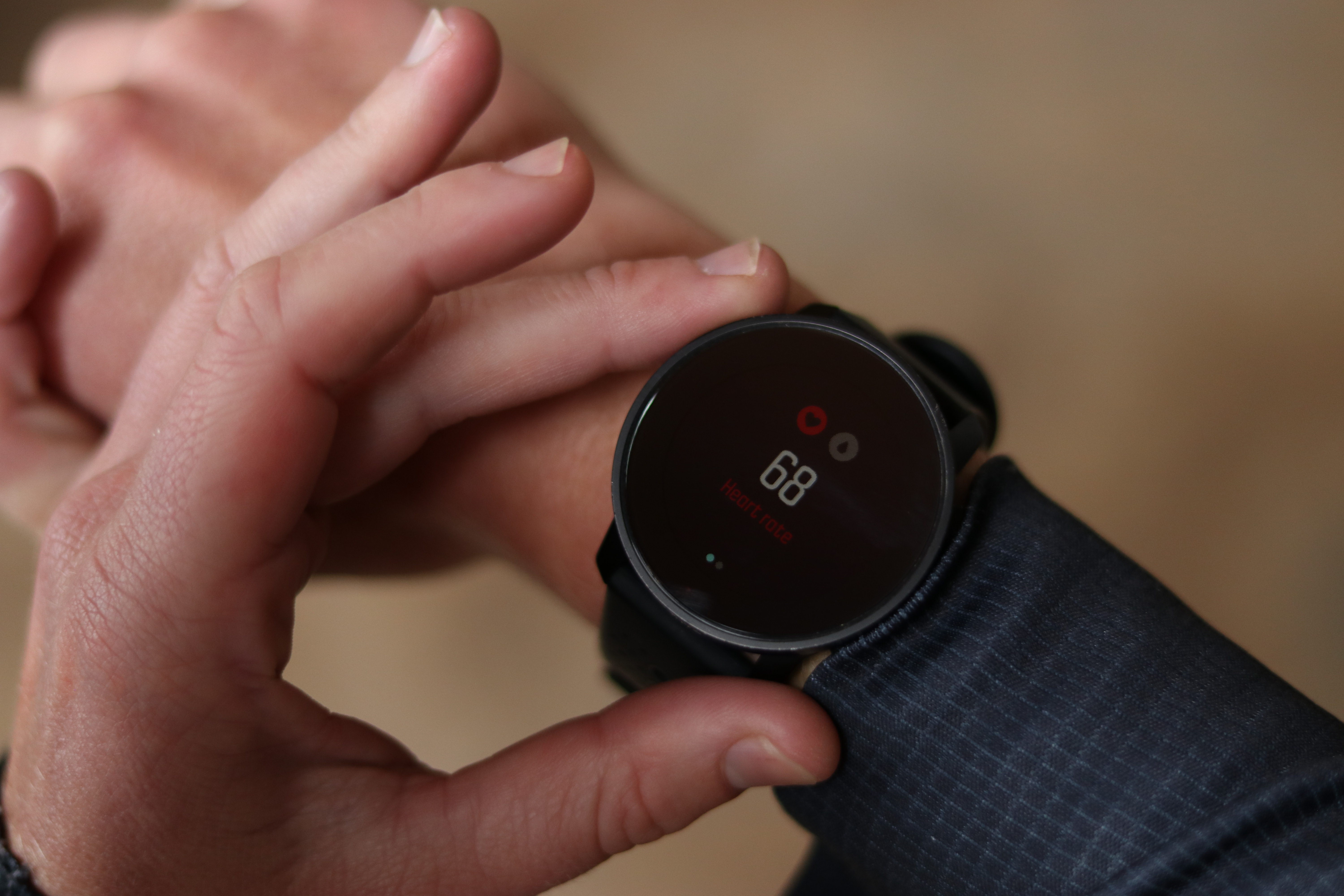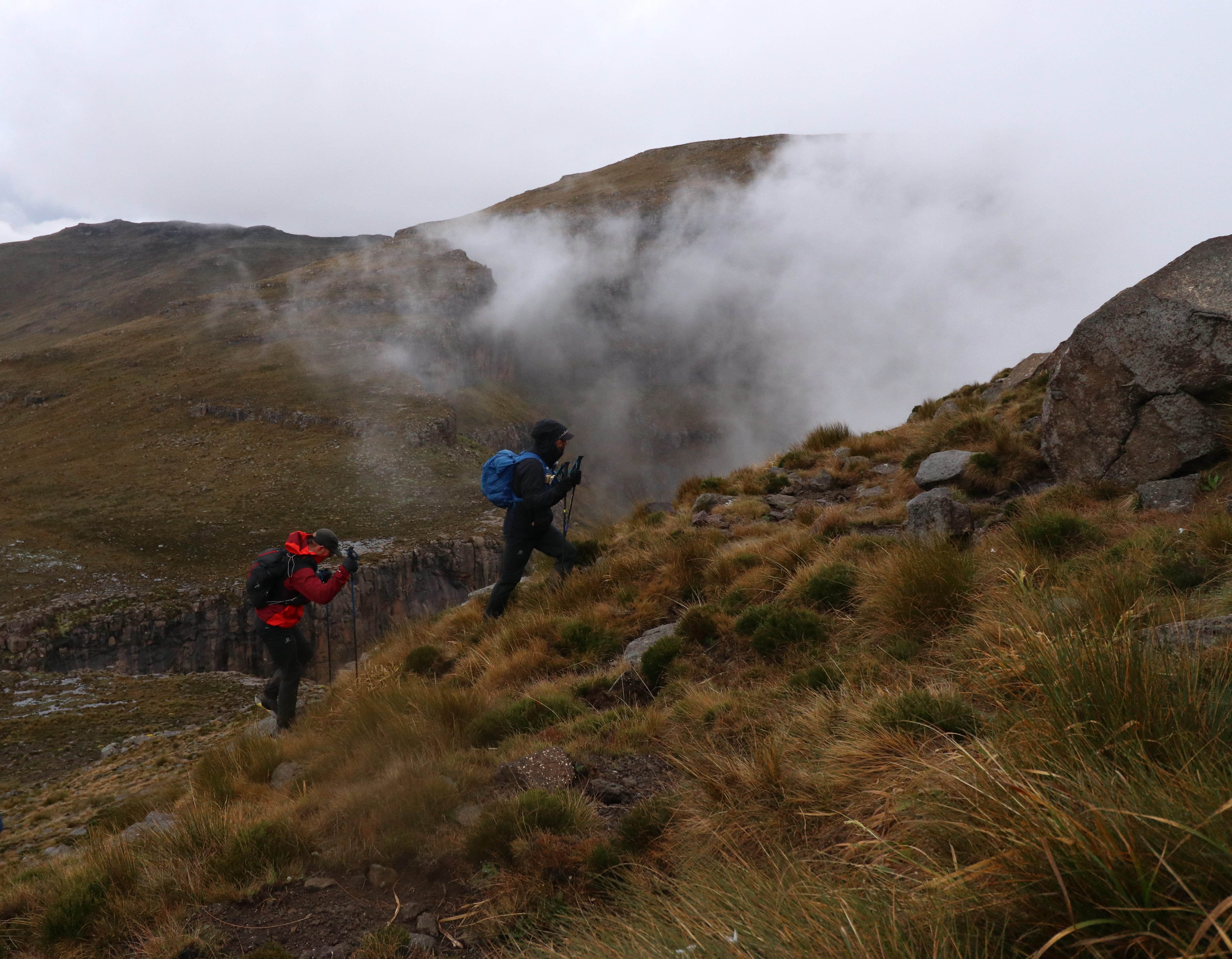Nicolette Griffioen , Mountain Abandon

Is HR data valuable in mountain, trail and ultra running?
In Part 1 of this blog we discussed the role of subjective feedback in the coach-athlete relationship and the importance of Rate of Perceived Exertion (RPE) as a measure of intensity. One of our validations for using RPE as the primary measure of an athlete’s intensity in training was that “no data is better than bad data.” In saying this, we refer specifically to heart rate, one of the most commonly used objective measures of intensity.
Pace, while also popular and offering an extremely accurate metric in road running, is seldom a useful indicator of effort in trail and mountain running. So the question we’d like to address in this article is whether or not heart rate training is valuable in mountain, trail and ultra running, the pros and cons thereof, and factors to be aware of when evaluating training based on heart rate (HR).
Let’s start with the concept of “no data is better than bad data.” A complete lack of data, i.e. having no heart rate data from training, often leads to more cautious decision making. It’s that conscious incompetence at play – knowing that you don’t have all the facts. It drives you to think more critically, consider what accurate information you do have and, in this case, give more credit to the RPE system in evaluating your training. With bad data, it’s easy to have false confidence in the wrong decisions. Incorrect heart rate readings are unfortunately fairly common with old heart rate straps, low batteries in transmitters, many wrist-reading devices and in certain environmental conditions. The good news is that the accuracy of modern technological devices is improving rapidly and soon even wrist-reading heart rate is likely to be almost 100% reliable. But before even considering using heart rate as an intensity gauge, you need to make sure you’ll be working with good data.

What does a heart rate reading tell us?
Assuming accurate data, let’s review what that heart rate actually tells us. When you see a heart rate value on your watch, it’s a measurement of your body’s response to exercise, as opposed to a direct measure of the work being done. This is an important fact because it implies that one cannot simply equate heart rate reading to work load at any given moment, as many of us would like to do. Physiologically speaking, when your muscles perform work, they demand more oxygen from your cardiovascular system. Because oxygen is delivered by red blood cells, your heart has to pump more blood through the body. It does this by increasing the rate at which it pumps (heart rate) and also the volume of blood it pumps out, known as stroke volume. So while there is a very strong correlation between change in workload and change in heart rate, you can see that it’s really not a direct link. Also, heart rate response to exercise tends to lag slightly. If you’ve ever completed an interval and glanced at your watch to see how the recovery is going, only to find your heart rate still supposedly sitting at 180 bpm, you will have noticed this phenomenon.
Other factors affecting heart rate
There are several factors other than training intensity that affect heart rate and it’s important to know and understand these if you choose to run according to heart rate zones.
1. Core temperature. Up to 75% of energy produced by working muscles is lost as heat. Therefore, over the course of a training session or race, there is a normal, gradual increase in core temperature. But your body works hard to minimize this by carrying heat away from your core and distributing it to the skin for cooling via sweating, conduction and radiation. This increase in blood flow to redistribute heat requires more work by the heart, increasing HR.
2. Hydration. Closely related to core temperature and very important in ultra running is hydration status. A large component of your normal blood volume is fluid in the form of plasma. During exercise you lose fluid plasma through sweating and your blood plasma volume decreases. Your heart has to compensate in order to continue delivering oxygen to muscles and organs, which it does by increasing heart rate. If the plasma volume decreases further, at some point your body will start limiting blood flow to muscles and organs in favour of directing it to the skin surface for cooling. A key effect of this process is the reduction in blood flow to the stomach, consequent decrease in digestion and high incidence of nausea in ultra runners. This is why proper hydration is critical in maintaining the ability to eat and absorb nutrients in long distance endurance events.
3. Caffeine. As expected from a stimulant, one of caffeine’s natural effects is an increase in heart rate. If an athlete does a normal afternoon run but had coffee with a friend beforehand, and drank two cappuccinos and a coke on her way home, her heart rate for that session is almost guaranteed to be higher than usual.
4. Emotions. Whether it’s excitement or anxiety before a race, or stress after a hectic day at work, these feelings have a physiological effect in the form of an adrenal response where the adrenal glands release hormones like cortisol and adrenaline, which cause an increase in heart rate. In reality, heart rate is only objective in its measure of beats per minute (BPM); it is subjective in terms of the physiological stress being put on the body.

5. Altitude, or elevation. While most athletes train within a relatively small altitude range close to home, a goal race may be significantly different. Heart rate and respiratory rate both increase at altitude, especially from 5000 ft or 1500m and upwards. The cause is the reduced partial pressure of oxygen in the air being inhaled.
6. Fatigue. The final factor I want to discuss is fatigue. While mild fatigue can cause an increase in heart rate, severe chronic fatigue often suppresses the heart rate response. So when a very tired athlete suddenly has a high energy demand, they may find their heart rate response to be slow and blunted. This would be most noticeable at high intensity such as during a short time trial or intervals, where the target HR zone is almost maximal. At a submaximal intensity in casual training or on a recovery run, a very fatigued athlete would be more likely to experience a higher heart rate than expected for that intensity.
While mild fatigue can cause an increase in heart rate, severe chronic fatigue often suppresses the heart rate response.
Of all these factors that affect heart rate, fatigue can get an athlete into the most trouble. When the heart rate response is exaggerated and athletes see values higher than usual, they tend to slow down and dial back on the intensity. Conversely, when fatigue suppresses heart rate, many athletes tend to increase their effort and pace in an attempt to achieve their target HR zone for the session. Their effort will feel harder than it should but they ignore this in favour of seeing a specific value on their watch, and if they are truly fatigued, they’re really just digging themselves deeper into a hole. Repeated bouts of such training can put an athlete at risk of overtraining syndrome.
Heart Rate training is not an exact science
Excessive attention to heart rate and zones can also lead to a reduction in the efficacy of training, particularly with cardiac drift. Cardiac drift is a gradual increase in heart rate primarily due to increasing core temperature and mild dehydration over the course of a session, even if the same intensity is maintained throughout. Let’s take cardiac drift during an interval session as an example. An athlete may need to perform 3 intervals at the same intensity, but by the last interval her HR is higher than the HR zone she was instructed to target, due to cardiac drift on a hot afternoon. If she’s basing her intensity only on HR and not RPE or pace, she might slow down in order to remain in the correct HR zone, thereby reducing her workload and causing the workout to lose some of its potential efficacy.
If we take all these factors into account it becomes obvious that training according to HR zones is not an exact science. This is even more true of ultra and trail running than road running. The effects of cardiac drift in a 100 miler are going to be much more significant than during a marathon. The cumulative effects of caffeine will also be greater over 12 plus hours of running versus a 5 hour marathon, assuming you use caffeinated products. And while most road runs are relatively flat with a fairly constant altitude, even a standard ultra trail race is likely to have a substantial amount of ascent and sections of higher altitude running.

Colin van der Berg on the 2022 DGT Run, Drakensberg, South Africa
All this said, however, I believe that there can still be a place for heart rate training in mountain, trail and ultra running. If you have accurate data, are aware of the external factors, and are prepared to use heart rate zones as a guideline and not a rule, then it can be useful. The following scenarios are ones in which I’d consider using heart rate training:
- A large percentage of training is being done on the road and the athlete wants a metric other than RPE. Heart rate is at least more relevant than pace when transferred to the trails.
- An athlete is struggling to grasp the concept of RPE and is rating all sessions at the same intensity, or seems to be performing all sessions at the same intensity.
- An athlete has been training according to RPE for a while and their improvement seems to have plateaued, despite the correct training stimuli being applied.
- An athlete needs to limit their intensity for medical reasons.
- An athlete has a tendency to complete all their long runs at too high an RPE. HR can be useful in setting an upper limit maximum for these sessions, and also in the first part of a race for an athlete that tends to start too fast.

Determining Heart Rate Zones
Should an athlete decide to go down the HR training road, then the final step to get started is to determine the relevant heart rate zones. Anyone who has searched for a method online will know just how many options are available and how confusing it can be selecting one! In line with our “good data” approach, I suggest executing a field test test to determine your metrics, rather than just the traditional calculations based on age.
My preferred method is a lactate threshold heart rate test, performed outdoors on a smooth, runnable and relatively flat course. The protocol is a 20 minute warm up, then a 30 minute time trial effort (maximum sustainable pace for 30 min, with the last 10 min being as close in pace as possible to the first 10 min), followed by a 10 min recovery jog. Heart rate should be measured with a heart rate strap for the full duration, but the average HR of the last 20 minutes of the time trial effort is taken as the athlete’s lactate threshold heart rate.
Once you have a LTHR value to work with, you need a template to calculate the specific heart rate zones. Consistency is the most important factor here, so choose a template and stick with it. Apply the same method to all your athletes, and retest in exactly the same manner to gauge changes over time. I like Joe Friel’s guide to setting zones (see below) and I just adapt it slightly to fit Xhale’s Levels of 0 to 5 in a way that works for me and my athletes.
Joe Friel’s Run Zones
Zone 1 Less than 85% of LTHR
Zone 2 85% to 89% of LTHR
Zone 3 90% to 94% of LTHR
Zone 4 95% to 99% of LTHR
Zone 5a 100% to 102% of LTHR
Zone 5b 103% to 106% of LTHR
Zone 5c More than 106% of LTHR
All these technicalities may seem daunting if you haven’t worked with heart rate training before, but one does develop a certain understanding over time. Consistent and repeated tracking in various training scenarios eventually leads to a sense of heart rate intuition, and once an athlete reaches this level, it is a pleasure for both them and the coach.
If you decide to use HR zones, see them only as a guideline to be used alongside RPE.
To conclude, I want to reiterate that heart rate training is not an exact science. If you decide to use HR zones, see them only as a guideline to be used alongside RPE. Explain to your athletes both the advantages and shortcomings of heart rate training, and ensure that they understand the nuances of the way you as a coach prescribe HR zone training. Does an interval session prescribed at level 4 mean the entire run is level 4, averaging out the intervals and recoveries? Or are the intervals alone level 4? Neither is incorrect, but the devil is in the details… One of the reasons I personally enjoy heart rate zone training is that it really makes me think. Establishing parameters, performing regular benchmark tests and answering the questions it inspires from athletes keeps me on top of my mental coaching game!
“Sharing the science, art and love of movement for a lifetime of sustainable and optimal performance.”
About the author

Based in South Africa, Nicolette is one of the founders of Mountain Abandon. She is a highly experienced ultra runner and provides both coaching and guided mountain adventures in the Drakensberg mountains. Always seeking to learn from nature and the experiences of her athletes she embrace all types of coaching tools and science and enjoys sharing this expertise.
Want your content featured?
If you would like to input to our Coaches’ Hub – or there is a topic you would like us to write about – why not send us your ideas? We are always looking for good content and it helps to promote your business.
Email: caroline@trainxhale.com

